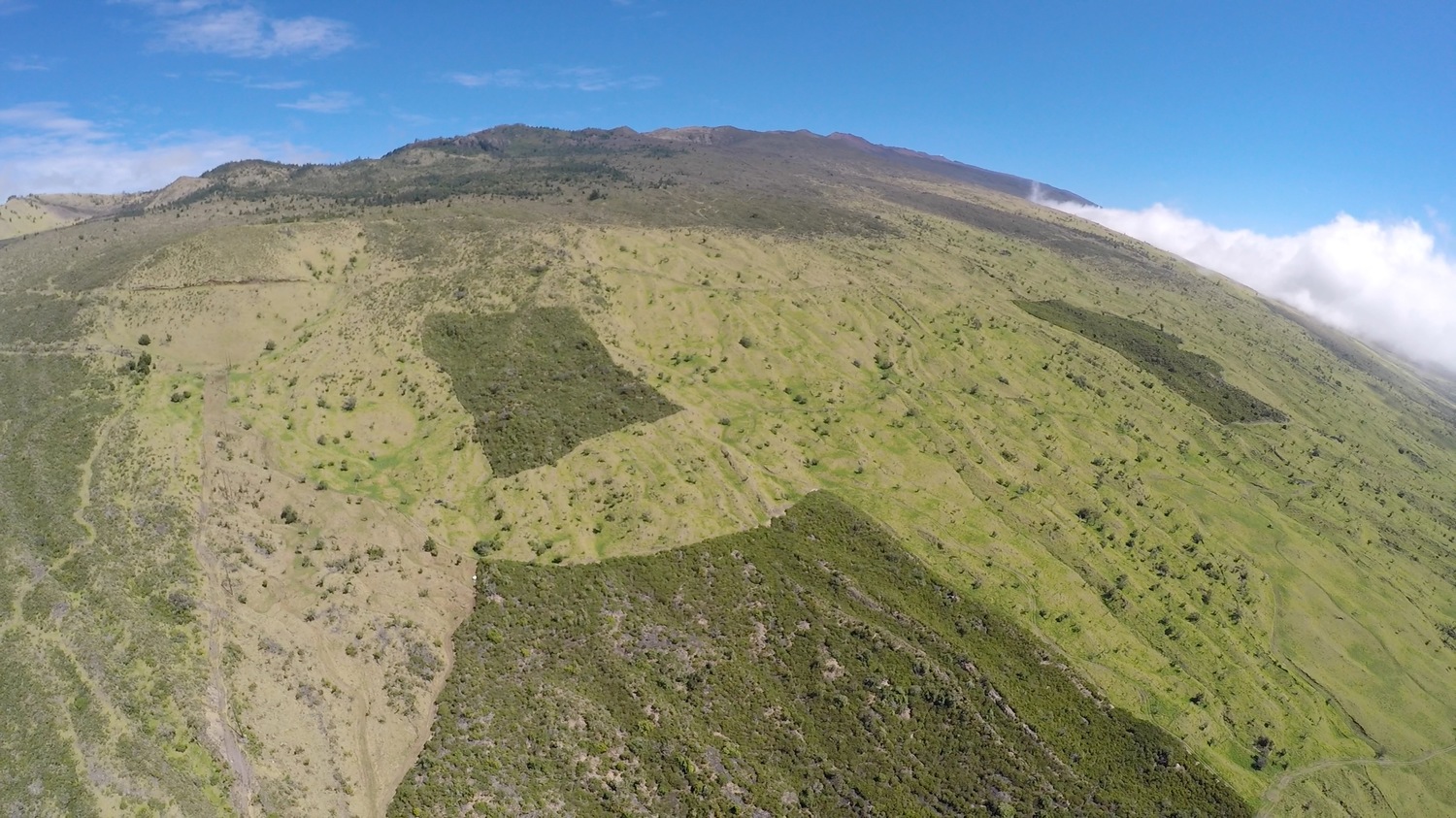‘Wahi Pana Auwahi’ Art Show Opens June 30th at Hui No‘eau

Auwahi, Maui. PC: Auwahi Forest Restoration Project.
The Auwahi Forest Restoration Project and the Hui Noʻeau Visual Arts Center are partnering to present ‘Wahi Pana Auwahi’, an exposition of works highlighting the protection and restoration of native dry forest at Auwahi.
The artwork to be revealed has been created by Maui artists and high school students, as well as a special body of artwork created by the Hui’s artist in residence, Mazatl. This family friendly event is free and open to the public, with a full lineup of fun and learning activities. The event will feature special performances by Paula Fuga, along with Wehiwehi O Leilehua hula halau and Wes Furumoto. Bring the family and support Maui’s native dry forests and our local artists!
The ‘Wahi Pana Auwahi’ opening will be held on Family Day, June 30th, from 10 a.m. to 2 p.m. at the Hui Noʻeau near Makawao.
In producing the ‘Wahi Pana Auwahi’ art show, artists were invited to explore and share the social, cultural, and biological aspects of what saving a Hawaiian forest at Auwahi invokes. Ecological restoration is a relatively new and exciting type of applied science, where forest tracts are brought back to life and through participation in the process, the human community itself is restored and renewed.
The exhibit will showcase four stages of Auwahi forest, from past to present:
- Auwahi before human contact
- Auwahi as awahipana or ‘storied place’ for early Hawaiians
- The destruction of Auwahi forest by fire and invasive species
- The rebirth of Auwahi forest through the passionate volunteerism of the Maui community
To native Hawaiians, dry forests are invaluable and revered as a storehouse of unique, biocultural resources and the home of forest-associated spirits. Dry forests were the primary source of much of Hawaiian ethnobotanical material, including farming and fishing equipment, canoe construction, weaponry, medicine, symbols of spirituality and the hula. Noted Hawaiian ethnobotanist Isabella Abbott referred to Auwahi dry forest as a wahi pana, a sacred place and a ‘toolbox for early Hawaiians’.
From a biodiversity perspective, Hawaiian dry forests are among the richest and most imperiled of American forest ecosystems. Since human contact, Hawai’i’s biological losses have been described as a ‘tragic dismemberment’, with only 3% of the original forest of leeward areas remaining.
Beginning in 1997, ʻUlupalakua Ranch (the private landowner of Auwahi forest that has dedicated the lands for forest conservation) and biologists began working together to attempt field-to-forest ecological restoration of the diverse dry forest stands at Auwahi. Following restoration, native species vegetation cover increased from 10% to 98%, while non-native species cover declined from 87% to 2%. Even more surprisingly, bordering on spectacular, after an absence of hundreds of years, native seedlings of diverse species began reappearing in the recovering forest understory, a sign of returning forest health.
The community-based Auwahi Forest Restoration Project operates on the principles that involvement and support of local communities and scientific knowledge of ecological restoration and climate change are essential elements for durable conservation.









